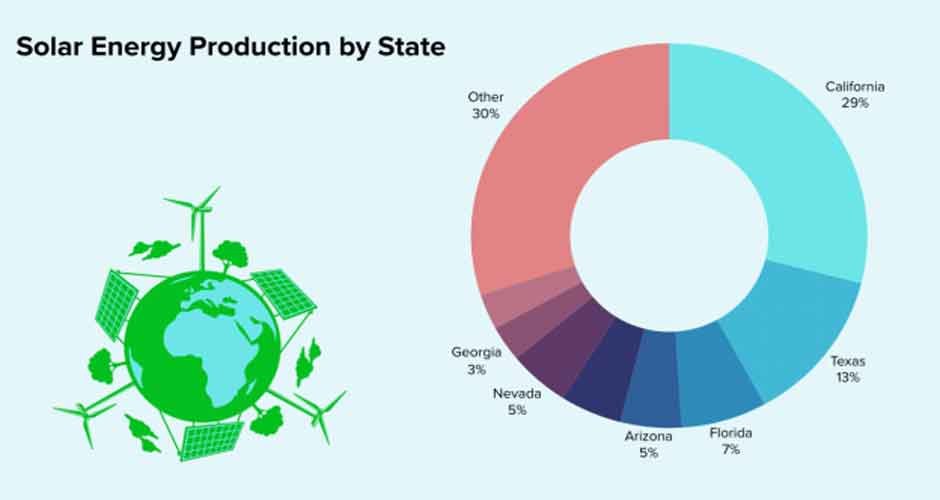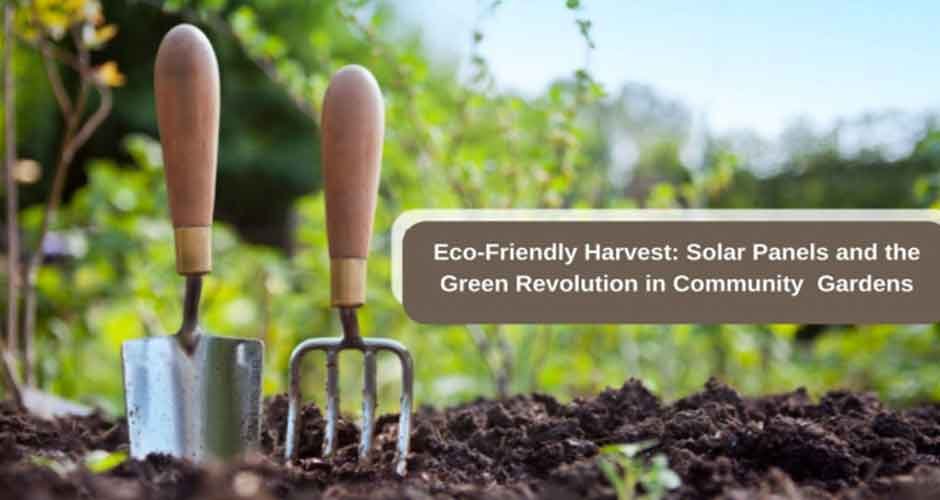Sustainable gardening is a growing trend among community gardeners. They are seeking an eco-friendly method to harvest healthy, community-grown produce. Solar panels are revolutionizing these community gardens by providing renewable energy. Solar panels power various gardening appliances and tools. This article will explore the environmental and cost benefits. Together, they drive this solar-powered green revolution in community gardens.
The Rising Interest in Sustainable Community Gardening
There have been growing concerns about climate change and the excessive use of chemicals. Many individuals aspire to cultivate their own fruits and vegetables using eco-friendly methods. Over 2 in 5 households grew food in the community, especially after the pandemic. Some participate in community gardens. This trend indicates a growing interest in sustainable gardening practices. Solar panels seamlessly blend sustainability with reaping nature’s bounty.
Solar Unit – The Game Changer for Community Gardens
Given the growing interest in sustainable gardening, it’s time to delve into the remarkable efficiency of solar units. Solar units are known for converting about 20% of sunlight into electricity efficiently. They have become a game-changer for garden enthusiasts.

Harnessing the Power of the Sun
Solar photovoltaic (PV) modules work by directly converting sunlight into electricity. The PV cells use semiconducting materials to absorb photons from sunlight and emit electrons. As a result, they generate a usable electric current. Thin-film solar units with adhesive backing have made it easy to integrate solar energy harvesting into community gardens. Considering its growing popularity, individuals can lease land to solar farms. Leasing land to solar farms is a significant project that necessitates trust and partnership between parties. However, its success will bring substantial financial benefits.
The Benefits of Solar Energy for Community Gardens
Beyond the environmental advantages, solar energy delivers compelling financial benefits:
Increasing Affordability of Solar Units
Solar units for communities are becoming more affordable. This is especially true with the extension of the federal residential solar tax credit. Taxpayers can claim a 30% tax credit on solar system costs on their income taxes. However, it’s best to install them before January 1, 2033. That’s when the tax credit is set to decrease to 26%.
Many financing options are available to make it easier to buy solar systems. You won’t need as much money to pay for it upfront. Furthermore, the monthly amount owed on a solar loan is less than your average utility bill.
Electricity Bill Savings
Solar offers amazing potential to save money on your monthly bills. It’s a huge help with utility bills soaring upward every year. Community owners can save an average of $600 per year on electricity bills by switching to solar panels for their community gardens. Thus, solar is likely to remain a good financial option in the coming years.
Despite the given average, the amount saved will still depend on how much energy you use. It also depends on how much power the solar energy system can generate. Another option is to use a leased, third-party-owned system. It will allow you to host a solar energy system on your rooftop and buy back the electricity generated. It’s usually given at a discounted rate, which is less than the utility bills.
Increased Community Value
Installing a solar system can increase the value of your community by about 4%, per EnergySage. Solar photovoltaic panels are considered upgrades, like renovated kitchens or finished basements. Community buyers across the country are willing to pay a premium for communities with average-sized solar energy systems.
Lowered Carbon Footprint
Using solar energy in community gardens can reduce carbon emissions by 3-4 tons per year compared to conventional grid electricity.
Powering Eco-Friendly Garden Appliances
This section will explore how they can power a range of eco-friendly garden appliances.
Solar-powered garden tools, including irrigation systems and lighting, can collectively save the average household up to $600 per year on electricity bills, as mentioned earlier.
Solar-Powered Garden Appliances Offer Efficiency and Value
Various outdoor garden appliances, from water pumps to aeration systems, can be powered by small solar panels. These solar appliances have become mainstream, durable options:
- Garden Lighting
Solar spotlights and lanterns can save households 100 kWh per year. They provide ambient lighting for 8-10 hours daily.
- Irrigation Systems
Solar water pumps draw from wells and ponds for targeted garden irrigation without tapping into the grid.
- Water Features
Solar panels allow fountains and backyard streams to recirculate water efficiently.
94% of surveyed community gardeners were satisfied with their solar-powered tools, per GreenTech Media’s 2022 community Gardener Report. Respondents highlighted reliability and cost savings as major benefits.
Broader Environmental Impact
Having seen how solar energy can benefit both gardens and budgets, it’s time to delve into the impact on sustainability and the environment.
On a global scale, solar panels help reduce an astounding 37 million metric tons of carbon emissions annually, as reported by the International Energy Agency.
Towards a Greener Way of Gardening
Using renewable solar energy aligns with sustainable gardening practices:
- Solar-powered equipment like water pumps reduces gardening water usage by 70% on average compared to traditional tools.
- Pairing solar panels with composting, crop rotation, and organic pest control minimizes reliance on synthetic chemicals. Studies show a 20% decrease in fertilizer use when solar energy is leveraged.
Let Your Garden Flourish with Solar Energy
The case for solar powering your community gardens is compelling – it enables sustainable cultivation of healthy foods while saving money and emissions. As solar technology gets cheaper and more advanced, harnessing the sun’s rays for gardening will soon become the norm. Just like plants, the solar-gardening movement will continue flourishing and spreading greenery in its wake.
Frequently Asked Questions :
- How much do solar panels cost for a community garden?
For a small 3-5 kW solar system to cover garden appliances, expect $5,000 – $8,000 in installation costs on average after incentives and tax credits. This translates to 10-15 years for full cost recovery.
- What maintenance is needed for solar panels and appliances?
Aside from occasional panel cleaning, solar PV systems are maintenance-free. Solar-powered garden tools may need battery replacement every 5-7 years.
- Can solar panels work efficiently in cloudy regions?
Yes, solar panels can still generate 20-25% of their rated capacity on cloudy days. Advancements like multi-crystalline silicon cells also aid efficiency in diffuse light conditions.

